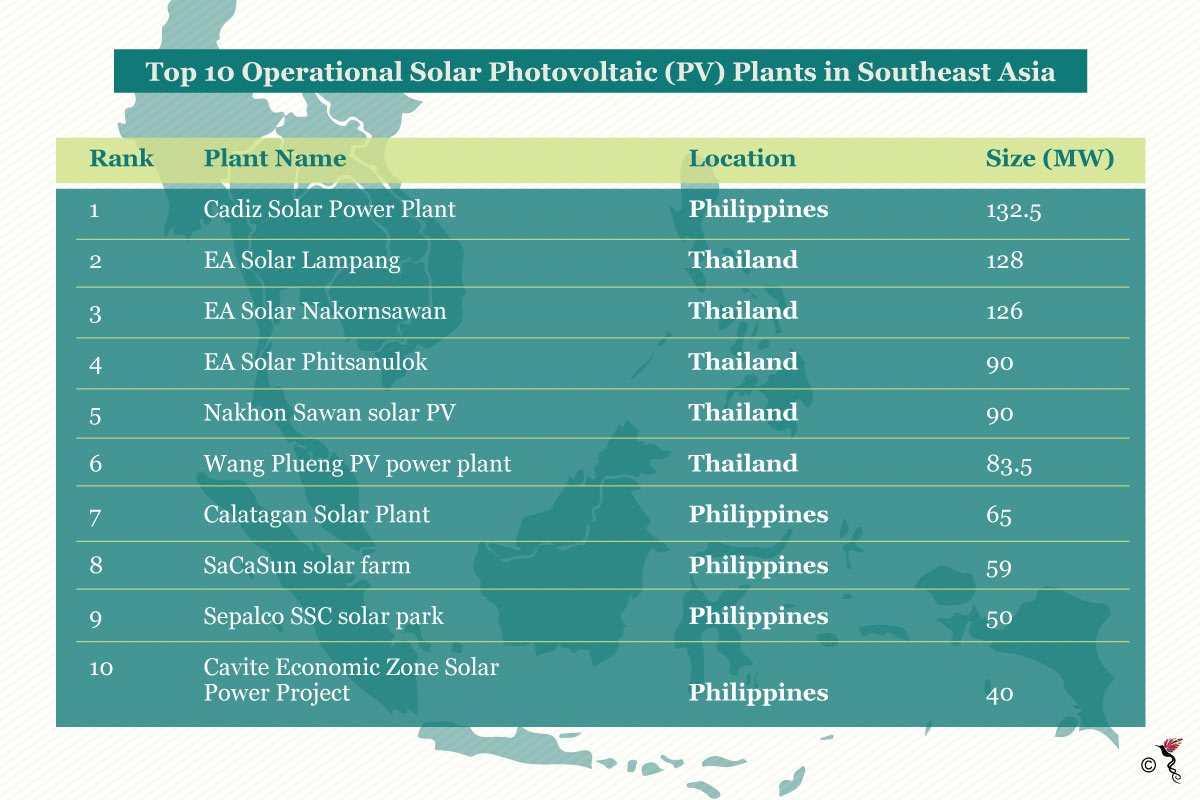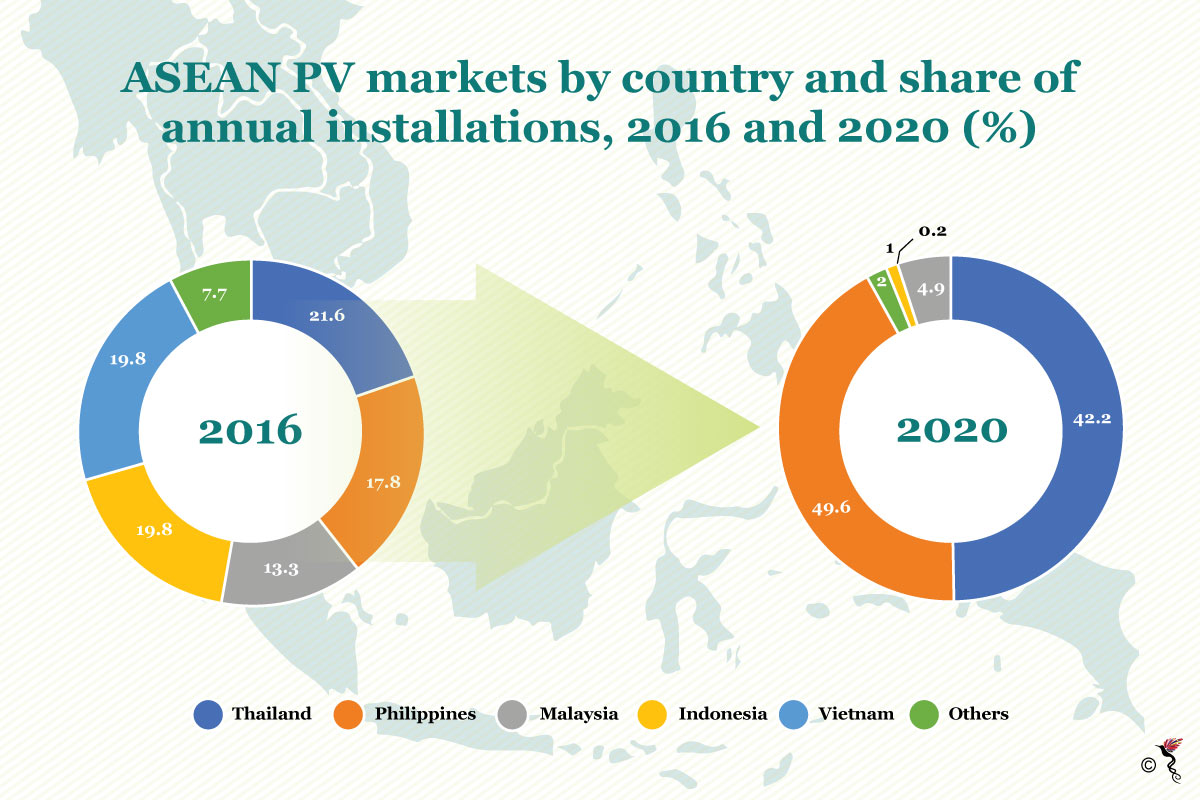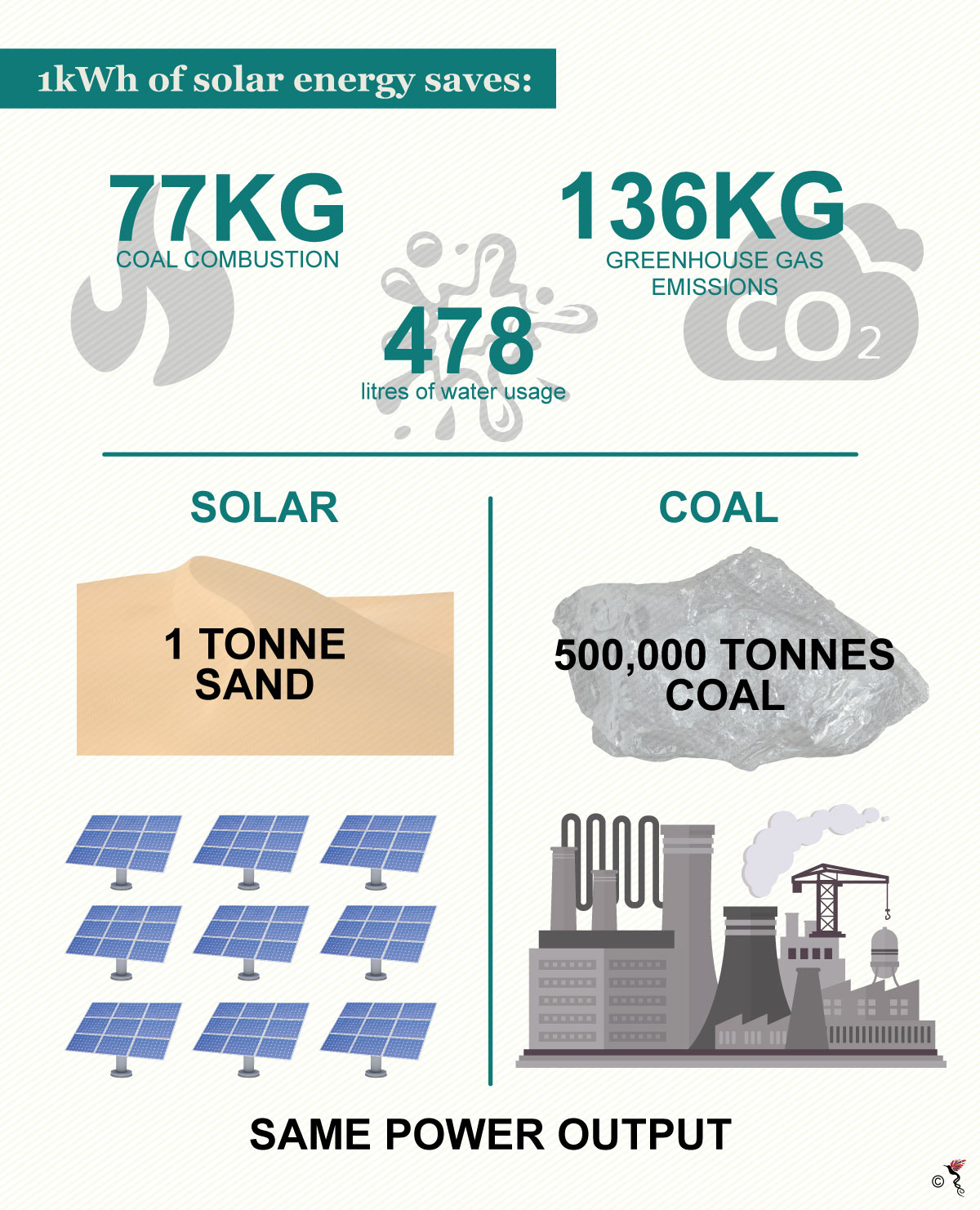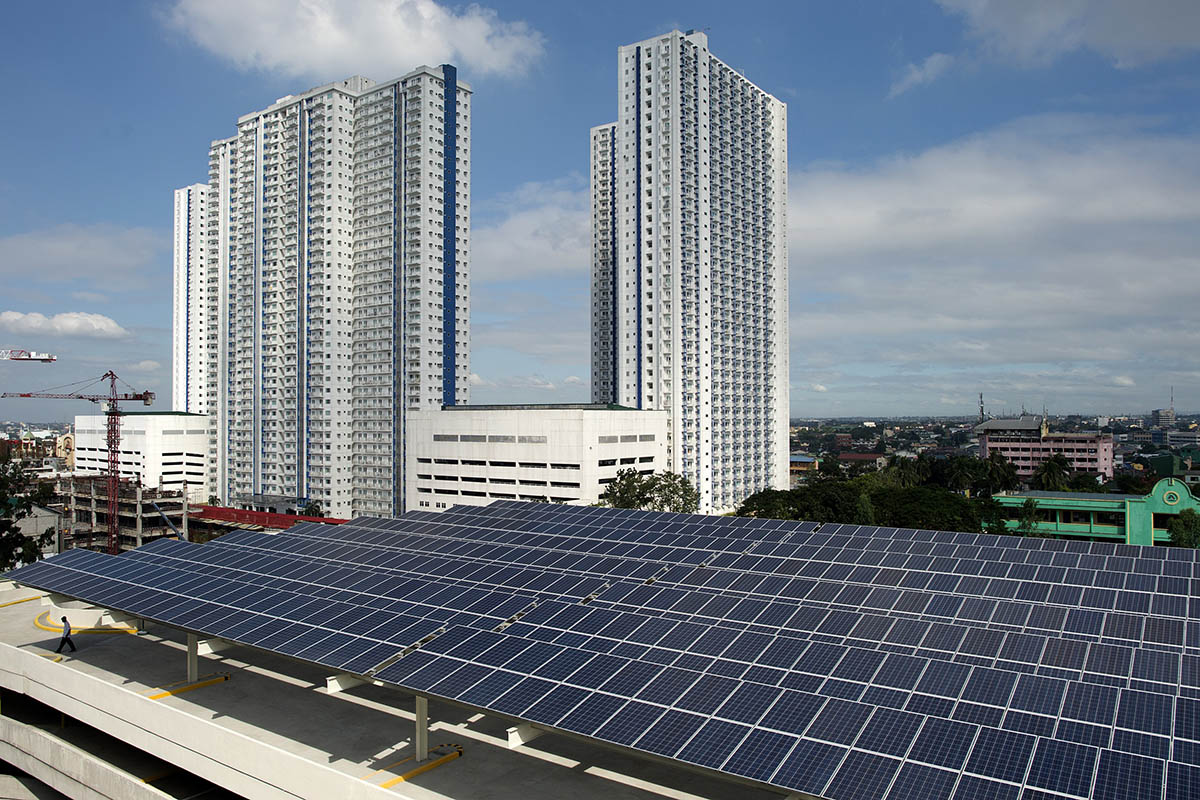“We have this handy fusion reactor in the sky – called the Sun. You don't have to do anything – it just works. It shows up every day and produces ridiculous amounts of power,” remarked technology révolutionnaire, Elon Musk when speaking to a crowd of eager listeners at a TED talk event.
Musk’s words come in the heels of a shift in global energy development, from fossil fuels to renewables – a shift which has reached the shores of Southeast Asia.
Making the case for solar
In a region with a seemingly insatiable thirst for energy, the supply of clean alternatives like solar is akin to killing two birds with one stone – providing much needed energy without polluting the environment. ASEAN already targets 23 percent of its energy mix to be made up of renewables by 2025 and to achieve that aim, solar energy will play a huge role.
But the promise of solar may fall on deaf years for lenders looking at its bankability. However, such notions are a relic of the past. Developments in solar energy research have made it a lucrative investment and should keep lenders eagerly waiting to write a handsome check to the next person with a solar project in need of financing.
The reasons for going solar are cogent – it is environmentally friendly and cost effective. The former is an argument well rehashed by embracers of renewable energy who want to leave a cleaner world behind for the future generation. It is the latter which needs to be clarified further as the common misconception is that solar energy is expensive compared to conventional fossil fuel sources.
The language easily understood by those with the financial capacity to fund solar projects is profit. At the most fundamental level, the profitability of solar projects lies in the fuel supply – the sun.
For starters, solar energy from the sun unlike fossil fuels isn’t susceptible to price volatility. Fluctuations in global coal and natural gas prices means the operating costs of the power plant varies and power plant owners can suffer huge losses when these prices surge. Where such price increases and volatility can be passed on to the consumer, electricity bills can easily skyrocket in any market reliant on fossil fuel for electricity generation.
Moreover, solar energy follows a regular irradiation pattern and the Southeast Asian region is blessed with geographically favourable conditions for sourcing the sun’s energy. Estimates by International Renewable Energy Agency (IRENA) indicate that the region’s average irradiance rate lies between 1,500 to 2,000 kWh per square metre annually, allowing for capacity factors upwards of 20 percent.

Sourced from Solarplaza. Originally published here.
Is solar bankable?
It comes to no surprise then that there has been increasing interest by solar investors who are quick to jump on the promising photovoltaic (PV) markets of this region. Falling costs of PV cells are a clear signal that solar energy is becoming more economically competitive with fossil fuels as the unit costs of installed capacity of solar become cheaper.
Globally, Utility-scale PV power plants have achieved record low prices of 0.03 dollars per KWh. In 2016 alone, IRENA estimates put the combined installation of PV capacities at approximately 3.8 GW in the region’s solar markets.
According to the ASEAN Centre for Energy (ACE), the average levelised cost of electricity (LCOE) of solar PV projects is at 22 cents per kWh. Although in countries with good irradiation levels – such as in Southeast Asia – these rates can also be much lower. Such low rates are a lure for utility operators who should be more than willing to ink long tenured Power Purchasing Agreements (PPA) with solar energy producers at a utility level.
At a consumer level, those with grid connect solar systems can stand to gain from surplus electricity being fed back to the grid via feed-in tariff (FiT) programs and at a lower LCOE, national utilities would be able to profit – thus making this win-win venture. Consumers will only have to bear costs incurred due to stand-by generation in case the solar power production is not producing as expected and such costs can be negated if the necessary steps are taken to do so.
“In general, the modern grid could handle the intermittent electricity from solar well, provided they can best estimate the electricity production from the energy source. The more accurate the projected electricity, the lesser the cost of stand by generation,” remarked Han Phoumin, Energy Economist with the Economic Research Institute for ASEAN and East Asia (ERIA) in an email reply to The ASEAN Post.

Sourced from Apricum Market Model Q3/2016 centre case
Measuring risks
The construction risks that accompany the harvesting of solar energy is considerably lesser than traditional fossil fuel plants. In many areas, solar farms do not require the same level of specialised knowledge when compared to engineering works for traditional thermal power plants. The ‘plug and play’ mechanics of the solar system means anyone with a reasonable knowledge of the system can to manage it.
Parts of the solar system are also much cheaper to source and replace compared to fossil fuel plants with maintenance-heavy and costly generators. Solar farms are less complex to build, manage and operate which significantly lowers its construction costs compared to power plants running on fossil fuels. It also provides for significant job opportunities in a labour market with lower skillset, particularly in rural environments.
Environmental risks associated with solar energy farming is also negligible when compared to conventional fossil fuel energy. Externalities associated with the latter are easy to see – water pollution, CO2 emissions, health safety concerns are just amongst the myriad of problems which see many turning their heads to renewables.
According to Patrick Jaeger, Vice President Development Asia-Pacific at Conergy in an email interview with The ASEAN Post, on average, solar PVs can be up to 40 times less emissive than coal power.
“It usually takes a PV panel less than three years to amortize its negative carbon footprint. Considering the lifetime of a solar system of 25 years, this is a very good ratio,” he added.
Most critics of solar point to the mining of silicone dioxide – the main ingredient of PV cells – which has a detrimental impact on the environment. However, as technology catches up, more and more cheaper and environmentally friendly ways of developing PV cells are being discovered and used. For example, the usage of copper (II) oxide, which isn’t only abundant and nontoxic, but helps improve the efficiency of PV cells drastically.

Comparison between solar and coal.
Are lenders convinced?
If the recent trends in energy technologies have taught us anything, it is that renewables are no longer considered a luxury option but an affordable one, making it a viable option especially in low and middle-income economies in Southeast Asia. As the region’s affinity for solar grows, one can only hope the lenders take note, and follow suit.
Jaeger noted that the main problem with solar bankability in Southeast Asia is a glaring lack of regulation, support from policy makers and even hostility by grid network operators or state-owned utilities.
“One has to bear in mind that utility scale solar PV in Southeast Asia is still a nascent and disruptive technology. Incumbent utilities or network operators see it as a threat to their business models. Coupled with lack of understanding or capacity at the levels of government and administration, this can provide for huge regulatory challenges and uncertainties,” he said.
However, there have been some lenders who have taken steps in the right direction.
Senior Vice President, Business and Technology Advisory at Malaysian Debt Ventures, Sharizal Mustapah Kamil when contacted by The ASEAN Post remarked that the general rule of thumb is, the bigger the solar project, the higher its likely return on investment.
Drawing from his experience in Malaysia, he highlighted three major factors that deem a solar project as profitable – (1) keeping the initial capital expenditure low, (2) using the right technology to harness the most out of limited daylight availability and (3) viable tariff rates.
“In its normal know-your-business process, lenders would look at the strength of the project – reliable and experienced Engineering, Procurement, Construction and Commissioning (EPCC), efficiency of the solar equipment and favourable power system study – as well as the financial and technical strength of the project owner,” he added.
The potential for solar in this region is immense – led by Thailand and the Philippines – many other countries like Malaysia, Singapore, Indonesia and Vietnam are fast catching up. Aside from the obvious environmental gains from using solar, it is a profitable venture to get into – a treat for both the heart and the wallet.
Recommended stories:
